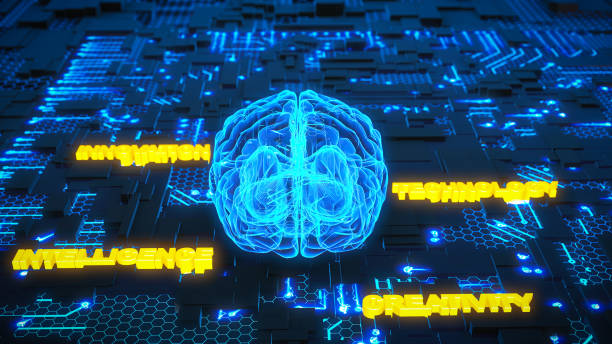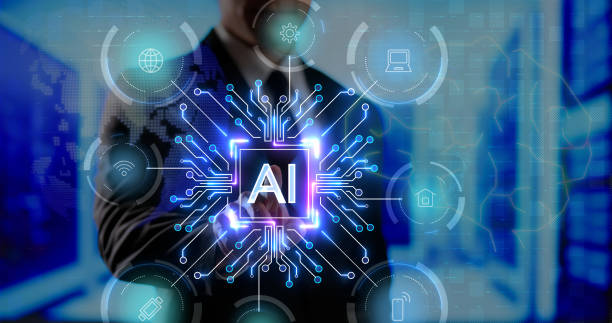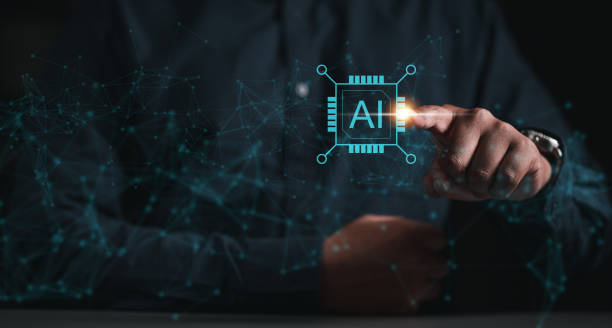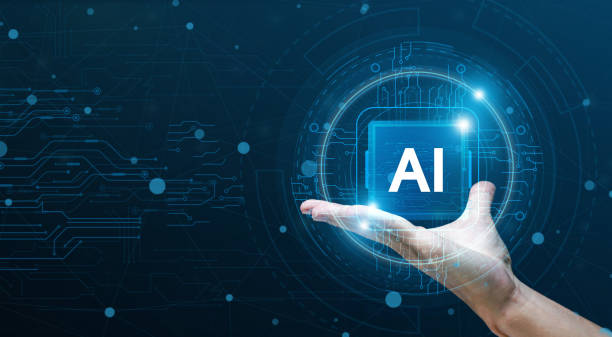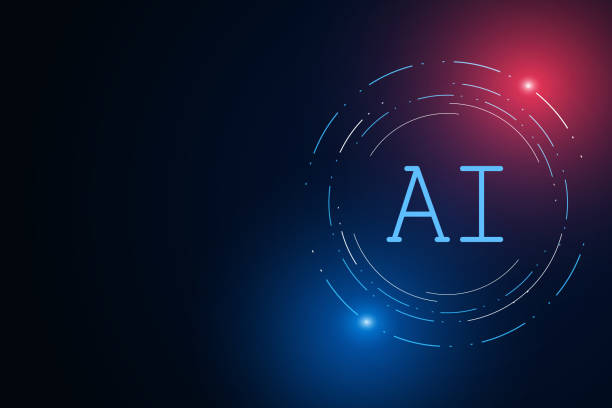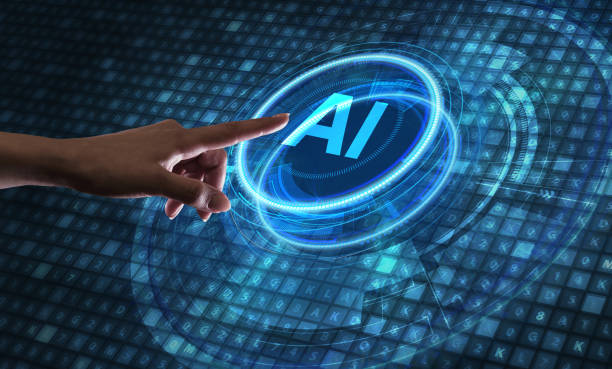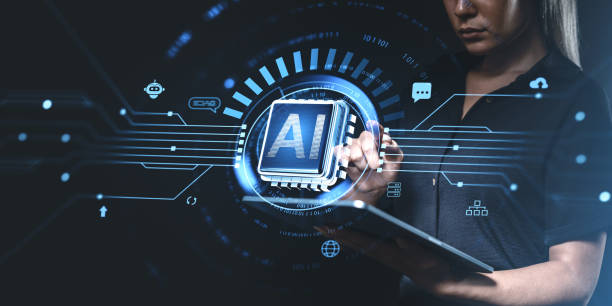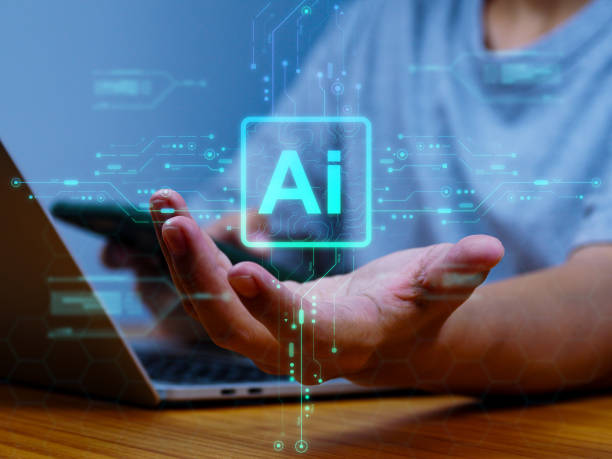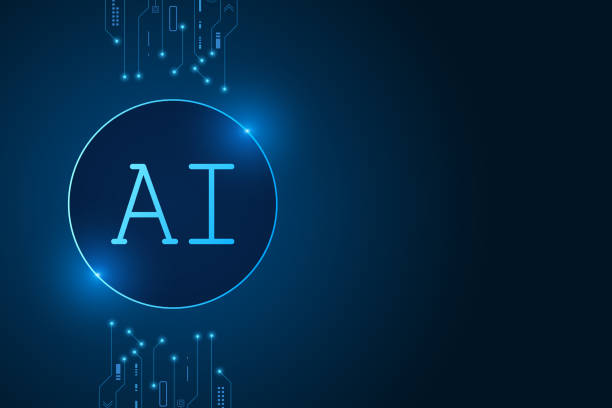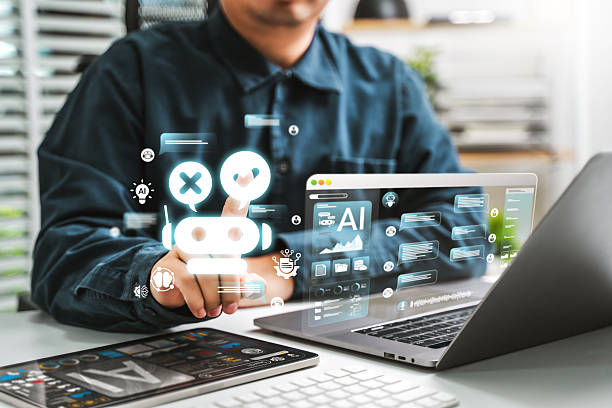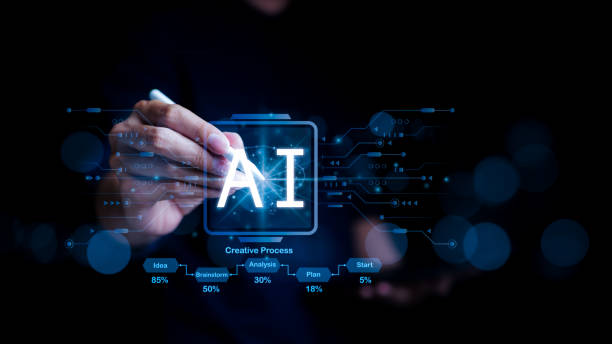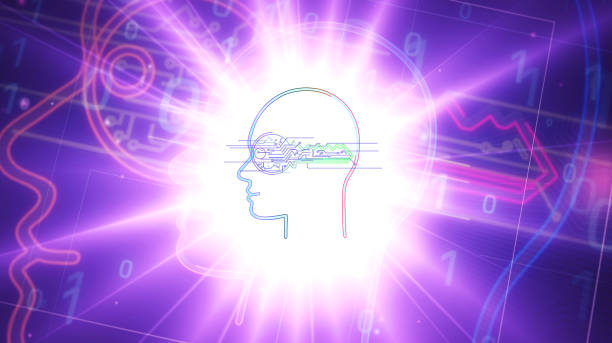What is an Artificial Intelligence Robot and What are its Applications?
What is an Artificial Intelligence Robot and What are its Applications?
#Artificial_Intelligence (AI) is rapidly changing our world, and the artificial intelligence robot is one of its most fascinating and practical manifestations.
An artificial intelligence robot is a combination of #robotics and artificial intelligence that allows machines to perform tasks that previously only humans could do.
These robots, using complex algorithms and machine learning, are able to understand the environment, make decisions, and take various actions.
The applications of #AI_Robot are very broad and can be found in almost every industry.
In the manufacturing sector, intelligent robots can automate production lines, improve product quality, and reduce costs.
In the service sector, chatbot robots can answer customer questions and provide technical support.
In medicine, surgical robots can perform complex operations with greater precision.
Even at home, smart robots can act as personal assistants and perform tasks such as cleaning, caring for the elderly, and providing entertainment.
The advantages of using artificial intelligence robots include increased productivity, reduced costs, improved quality, increased accuracy, and the ability to perform dangerous or repetitive tasks.
However, there are also challenges.
For example, the development and implementation of intelligent robots require high investment, and there are concerns about the replacement of human labor by robots.
Did you know that a poorly designed online store can drive away up to 70% of your potential customers? Rasaweb transforms your sales with professional and user-friendly e-commerce website design.
✅ Significant increase in sales and revenue
✅ Full optimization for search engines and mobile devices
⚡ [Get free consultation from Rasaweb]
Main Components of an Artificial Intelligence Robot
Main Components of an Artificial Intelligence Robot
An artificial intelligence robot consists of several main components, each of which plays an important role in its overall performance.
These components include:
- Sensors: Sensors allow the robot to collect information from the surrounding environment.
This information can include images, sounds, temperature, pressure, and other sensory data. - Processor: The processor is the brain of the robot, which processes the information collected by the sensors and makes the necessary decisions.
Processors typically use artificial intelligence and machine learning algorithms. - Actuators: Actuators allow the robot to interact with the surrounding environment.
These actuators can include motors, arms, wheels, and other mechanical components. - Software: Software is a set of instructions that tell the robot how to act.
The software of artificial intelligence robots typically includes artificial intelligence algorithms, machine learning models, and user interfaces. - Power Source: The power source provides the energy needed for the robot to function.
This source can include batteries, fuel cells, or a direct connection to electricity.
The interaction between these components allows the robot to perform complex tasks.
For example, an intelligent robot can use its sensors to identify objects, use its processor to plan a path to reach those objects, and use its actuators to access those objects.
Types of Artificial Intelligence Robots Based on Application
Types of Artificial Intelligence Robots Based on Application
Artificial intelligence robots can be categorized based on various applications.
Some of the most common types of these robots include:
- Industrial Robots: These robots are used in factories and production lines to perform repetitive and dangerous tasks.
Industrial robots can help increase production speed and accuracy. - Service Robots: These robots are designed to provide services to humans.
Service robots can be used in restaurants, hotels, hospitals, and homes. - Medical Robots: These robots are designed to assist doctors in performing surgeries, diagnosing diseases, and caring for patients.
Medical robots can help increase accuracy and reduce medical errors. - Military Robots: These robots are designed to perform military tasks such as reconnaissance, bomb disposal, and combat.
Military robots can help reduce human casualties in wars. - Space Robots: These robots are designed to explore space and conduct scientific research in hazardous environments.
Space robots can help collect valuable information about planets and other celestial bodies.
Each of these types of robots has its own unique features and capabilities and is designed to perform specific tasks.
With the advancement of technology, the applications of artificial intelligence robots are expected to expand and play a more important role in our lives.
| Robot Type | Application | Advantages | Disadvantages |
|---|---|---|---|
| Industrial | Automation of production lines | Increased speed and accuracy, reduced costs | High initial cost, requires expertise for programming |
| Service | Providing services to customers, helping the elderly | Improved customer experience, reduced workload for employees | Limitations in human interaction, security concerns |
| Medical | Precise surgery, disease diagnosis | Reduced medical errors, improved treatment outcomes | High cost, requires specialized training for doctors |
Click here to preview your posts with PRO themes ››
Challenges in Developing and Implementing Artificial Intelligence Robots
Challenges in Developing and Implementing Artificial Intelligence Robots
The development and implementation of artificial intelligence robots come with numerous challenges.
Some of the most important of these challenges include:
- High Cost: The development and construction of intelligent robots require a significant investment in research and development, equipment, and specialized human resources.
- Technical Complexity: The design and programming of intelligent robots require high knowledge and expertise in various fields, including artificial intelligence, robotics, electronics, and software.
- Ethical Considerations: The use of intelligent robots raises concerns about the replacement of human labor, privacy, and safety.
- Technological Limitations: There are still limitations in the ability of intelligent robots to understand and interact with the surrounding environment.
For example, robots still face problems in recognizing emotions and understanding natural language. - Need for Training Data: Intelligent robots need a large amount of training data to learn and improve their performance.
Collecting and preparing this data can be time-consuming and costly.
Despite these challenges, recent advances in artificial intelligence and robotics have made it possible to develop and implement intelligent robots in various fields.
With the continuation of these advances, intelligent robots are expected to play a more important role in our lives.
Tired of your e-commerce website not generating as much revenue as its potential? Rasaweb, a specialist in designing professional e-commerce websites, solves this problem forever!
✅ Increase sales and revenue
✅ Fast loading speed and excellent user experience
⚡ Get a free e-commerce website design consultation
The Future of Artificial Intelligence Robots
The Future of Artificial Intelligence Robots
The future of artificial intelligence robots looks very bright and promising.
With rapid advances in artificial intelligence, machine learning, and robotics, intelligent robots are expected to be able to perform more complex and diverse tasks.
In the future, intelligent robots will likely play a more important role in our lives.
They can be used in various fields, including manufacturing, services, medicine, education, and entertainment.
Intelligent robots can help us do things faster, more accurately, and more safely.
They can also help us solve complex problems and discover new solutions.
However, the development and use of intelligent robots also require attention to ethical and social issues.
It must be ensured that intelligent robots act in the interest of society and respect human rights and interests.
In short, the future of artificial intelligence robots is full of opportunities and challenges.
By using this technology correctly, we can build a better and more sustainable world for ourselves and future generations.
Artificial intelligence is one of the main pillars of this progress, and the artificial intelligence robot is an embodiment of this progress.
The Role of Artificial Intelligence Robots in Various Industries
The Role of Artificial Intelligence Robots in Various Industries
#AI_Robot increasingly plays an important role in various industries.
Below we examine the role of these robots in some key industries:
- Manufacturing: Intelligent robots are used in production lines to perform repetitive tasks, assemble parts, and control quality.
They can help increase production speed and accuracy, reduce costs, and improve safety. - Services: Intelligent robots play a role in providing services to customers, answering questions, and providing technical support.
Chatbot robots can be available 24 hours a day and help customers solve their problems. - Healthcare: Intelligent robots are used in surgery, rehabilitation, drug delivery, and patient care.
They can help increase surgical accuracy, reduce recovery time, and improve the quality of patient care. - Transportation: Intelligent robots are used in self-driving cars, drones, and public transportation systems.
They can help reduce traffic, improve safety, and reduce air pollution. - Agriculture: Intelligent robots are used in planting, cultivating, and harvesting agricultural products.
They can help increase productivity, reduce water and fertilizer consumption, and improve the quality of agricultural products.
With the advancement of technology, the role of artificial intelligence robots in various industries is expected to expand and help create new opportunities and solve complex problems.
Robotics and artificial intelligence are two complementary fields that, by working together, can help advance various industries.
Artificial Intelligence Robots in the Home and Everyday Life
Artificial Intelligence Robots in the Home and Everyday Life
Artificial intelligence robots are gradually entering our homes and everyday lives.
These robots can help us perform various tasks and improve our quality of life.
Click here to preview your posts with PRO themes ››
Some of the applications of intelligent robots in the home include:
- Cleaning: Robotic vacuum cleaners and surface cleaners can help us clean the house and save our time and energy.
- Caring for Children and the Elderly: Care robots can help care for children and the elderly and notify us if any problems arise.
- Entertainment: Toy and companion robots can act as companions and entertainment for children and adults.
- Personal Assistant: Personal assistant robots can help us perform various tasks such as setting reminders, playing music, and controlling smart home devices.
- Security: Guardian robots can help maintain home security and warn us if any danger arises.
| Advantages | Disadvantages |
|---|---|
| Saving time and energy | High initial cost |
| Improving quality of life | Privacy concerns |
| Increasing safety and security | Need for maintenance and repair |
With the advancement of technology, intelligent robots are expected to play a more prominent role in our daily lives and help us perform various tasks.
Artificial intelligence robots and artificial intelligence smart homes can make life easier and more enjoyable.
The Impact of Artificial Intelligence Robots on the Labor Market
The Impact of Artificial Intelligence Robots on the Labor Market
The development and use of artificial intelligence robots have significant effects on the labor market.
These effects can be both positive and negative.
On the one hand, intelligent robots can increase productivity and reduce costs by automating repetitive and dangerous tasks.
This can lead to the creation of new jobs in fields related to the development, implementation, and maintenance of robots.
Also, intelligent robots can help humans perform more complex and creative tasks and provide new opportunities for individual growth and development.
On the other hand, intelligent robots can lead to unemployment by replacing human labor in some jobs.
This can be especially challenging for people working in low-skilled and repetitive jobs.
To deal with this challenge, people need to acquire new skills and adapt to changes in the labor market.
Governments and organizations should also provide training and support programs to help people in this area.
In general, the impact of artificial intelligence robots on the labor market is complex and multifaceted.
By properly managing these changes and investing in education and skills development, the benefits of intelligent robots can be harnessed and their negative effects avoided.
Artificial intelligence robots automation can create new opportunities and challenges for the labor market.
Did you know that 94% of first impressions of a company are related to its website design?
Rasaweb helps you create the best first impression by providing professional corporate website design services.
✅ Create a professional and reliable image of your brand
✅ Attract potential customers more easily and improve online ranking
⚡ Get a free corporate website design consultation
Ethical Considerations in the Development and Use of Artificial Intelligence Robots
Ethical Considerations in the Development and Use of Artificial Intelligence Robots
The development and use of artificial intelligence robots come with important ethical considerations.
These considerations should be taken into account in the design, construction, and use of these robots.
Some of the most important ethical considerations in this area include:
- Privacy: Intelligent robots can collect a lot of information about people.
It must be ensured that this information is properly protected and not used for illegal purposes. - Accountability: If an intelligent robot makes a mistake or causes damage, who will be responsible? There must be legal and ethical mechanisms for determining accountability in these cases.
- Justice and Equality: Intelligent robots should be designed to treat all people fairly and equally and prevent discrimination.
- Transparency: The functioning of intelligent robots should be transparent to users and the general public.
This helps to increase public trust and acceptance of this technology. - Safety: It must be ensured that intelligent robots are safe and do not pose any danger to humans.
Given these ethical considerations, it is necessary to create a comprehensive ethical framework for the development and use of artificial intelligence robots.
This framework should be supported by governments, organizations, and civil society.
Artificial intelligence robots and ethics of artificial intelligence are two related issues that should be taken seriously.
How to Build an Artificial Intelligence Robot?
Click here to preview your posts with PRO themes ››
How to Build an Artificial Intelligence Robot?
Building an artificial intelligence robot is a complex and challenging project that requires knowledge and skills in various fields, including artificial intelligence, robotics, electronics, and programming.
Here is a step-by-step guide to building an artificial intelligence robot:
- Define the Goal: Before starting to build the robot, you must specify your goal accurately.
What tasks is your robot going to perform? What capabilities should it have? - Choose Hardware: The robot’s hardware includes sensors, actuators, a processor, and a power source.
You must choose hardware that matches your goal and provides the required capabilities. - Choose Software: The robot’s software includes the operating system, artificial intelligence algorithms, and user interface.
You must choose software that is compatible with your hardware and provides the required capabilities. - Programming: You must program the robot’s software to perform the desired tasks.
This requires knowledge and skills in programming languages such as Python, C++, and Java. - Testing and Evaluation: After programming the robot, you must test and evaluate it to make sure it works properly and meets your needs.
Building an artificial intelligence robot requires time, effort, and perseverance.
However, by gaining the necessary knowledge and skills, you can build an intelligent and functional robot.
Artificial intelligence robots and do_it_yourself can be an attractive and creative combination.
Frequently Asked Questions
| Question | Answer |
|---|---|
| What is an Artificial Intelligence Robot? | An Artificial Intelligence Robot (AI Robot) is a machine that is able to understand the environment, reason, learn, and make decisions to perform tasks independently. |
| What is the difference between regular robots and artificial intelligence robots? | Regular robots perform repetitive tasks based on pre-planning, while artificial intelligence robots can learn from experience, interact dynamically with the environment, and even behave in a way that resembles human intelligence. |
| What are the main applications of artificial intelligence robots? | They are used in industries (manufacturing, assembly), medicine (surgery, diagnosis), services (customer support, domestic), exploration (space, underwater) and many other fields. |
| What technologies are used in building artificial intelligence robots? | Machine Learning, Computer Vision, Natural Language Processing, Deep Learning and Robotics are among the key technologies. |
| Can artificial intelligence robots have emotions? | Currently, robots do not have emotions in the human sense. They can identify and react to emotions, but they do not experience emotions themselves. |
| What are the main challenges in developing artificial intelligence robots? | Safety, reliability, ethics, autonomy, adaptability to complex environments, and natural interaction with humans are important challenges. |
| How are artificial intelligence robots trained? | They are usually trained using large amounts of data, machine learning algorithms and deep learning to identify patterns and make decisions. |
| Examples of artificial intelligence robots in everyday life? | Smart robotic vacuum cleaners, customer support chatbot robots, self-driving cars, and surgical robots in hospitals. |
| Are artificial intelligence robots a threat to human jobs? | Some repetitive jobs may be automated, but at the same time, robots can increase productivity and create new jobs in the development, maintenance, and monitoring of these systems. |
| How is the future of artificial intelligence robots predicted? | They are expected to become smarter, more autonomous, and capable of performing more complex tasks and interacting more closely with humans in various environments. |
And other services of Rasaweb advertising agency in the field of advertising
Smart direct marketing: A new service to increase SEO ranking improvement through Google Ads management.
Smart digital advertising: A new service to increase customer acquisition through attractive user interface design.
Smart UI/UX: A professional solution to increase click-through rate with a focus on SEO-oriented content strategy.
Smart marketing automation: An effective tool for user interaction with the help of precise audience targeting.
Smart conversion rate optimization: A fast and efficient solution for online growth with a focus on Google Ads management.
And more than hundreds of other services in the field of internet advertising, advertising consulting and organizational solutions
Internet Advertising | Advertising Strategy | Advertorial
Resources
Gartner’s Conversational AI Platforms
,IBM Artificial Intelligence
,What is Oracle Artificial Intelligence?
,AWS Machine Learning
? For the growth and brilliance of your business in the online space, Rasaweb Digital Marketing Agency is by your side with the best services. To improve your digital presence and learn more about our solutions, including our professional services in the field of personal website design, please visit us.
📍 Tehran, Mirdamad Street, next to the Central Bank, South Kazerun Alley, Ramin Alley No. 6

